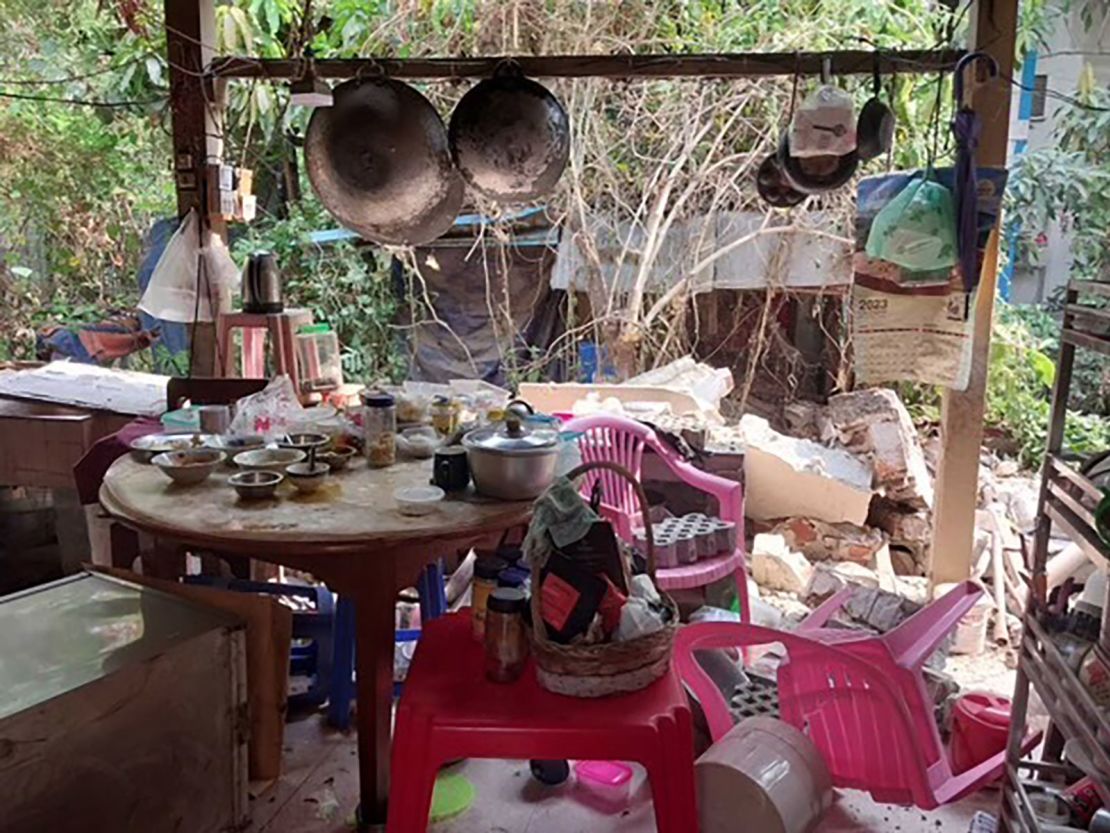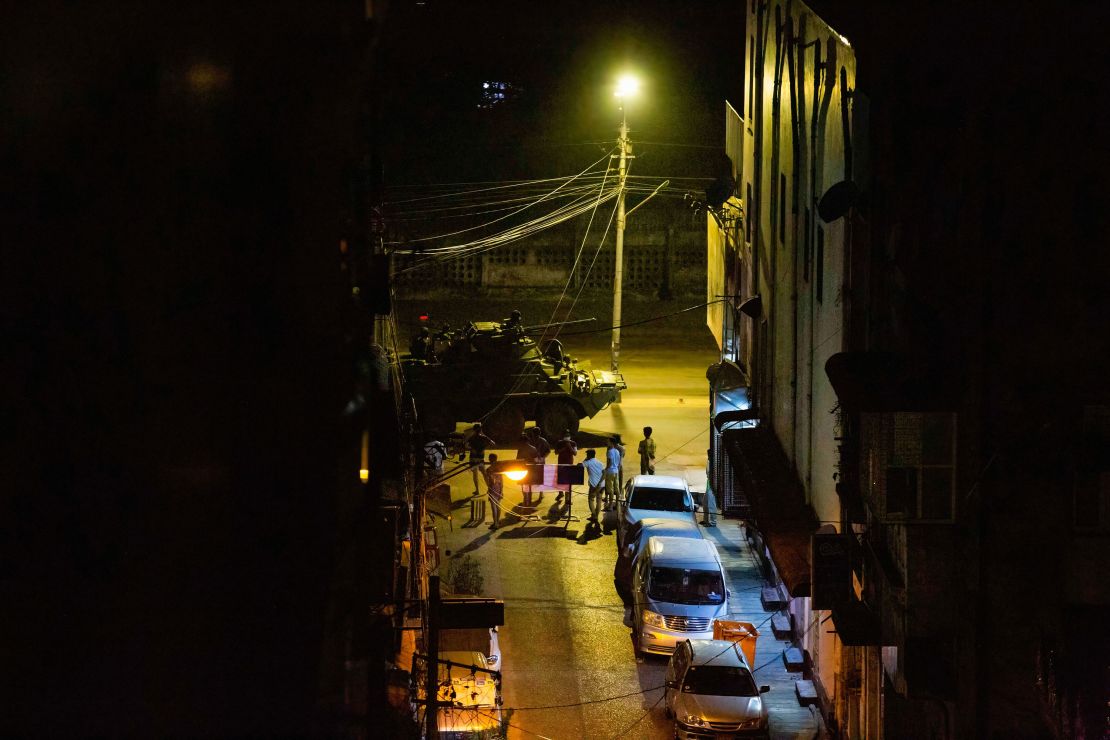CNN
—
When a 7.7 magnitude earthquake destroyed her family’s home in Myanmar, US-based international student Hope Pyae felt helpless.
On the morning of March 28, she woke to frantic calls from friends, who described to her the devastation of what was the strongest quake to have hit the country in more than 100 years. Thousands of people had been killed and injured, and untold numbers lay buried beneath the rubble.
Glued to her phone, she grew desperate for updates as videos of fallen buildings and sacred pagodas spread across social media. She feared the worst for her family. And as the extent of the damage grew, so too did her feeling of impotence.
Hope, for whom CNN is using a pseudonym for safety reasons, is among the growing number of international students who say they do not dare leave the US because they fear they will be barred from re-entry due to President Donald Trump’s clampdown on immigration.

The earthquake destroyed Hope’s family home, forcing her parents to move into a one-story house they now share with nearly a dozen other relatives. She yearns to visit them, to offer her support, but feels trapped by the uncertainty of what might happen upon her return to US soil.
“I really want to go home. I miss them so much,” Hope says, adding she is unable to shake “this feeling of, ‘what if I never meet them again,’ or ‘what if somebody passes away’ and I can’t be [there].”
So she remains in the US, journaling alone in her dorm to cope with the sadness.
Since re-entering office in January, Trump has led a widespread crackdown on immigration which has included a series of arrests and deportation proceedings against people associated with US colleges and universities, sending shockwaves across the immigrant and academic community.
As a result, many US colleges and universities, including UC Berkeley and Columbia, have begun advising international students, faculty, and staff to avoid non-essential travel, citing the unpredictability of US immigration policy and the possibility of Trump enacting a travel ban.
Myanmar, also known as Burma, was among those countries included in the travel ban Trump ordered in his first term and, according to a memo seen by Reuters, is on a list of nations that could face a similar measure in his second.

Against this background, many international students feel they have little choice but to stay put.
For Hope, who is studying clinical psychology, there is a painful twist in that when she left Myanmar, she had mentally prepared herself that she might never see her family again – but for very different reasons.
Her parents knew they would not have enough money to visit her, and they did not want her to risk coming back to a country that has been wracked by an ongoing civil war since a military junta took power in a coup four years ago.
“When I left my country, I was like, ‘Oh, this might also be the very last time we meet,’” says the 21-year-old.
She did not foresee it would be the politics of America, rather than Myanmar, that would hold her back.
Another student from Myanmar, Emma, a high school senior from a township near the capital city Naypyidaw, had big dreams when she learned last month that she had been accepted to study political science at a US university with full financial aid.
But she fears Trump’s clampdown could hinder her ability to get a student visa, even as an applicant with financial aid and a scholarship.
Emma, also identified by a pseudonym, fears that even if she does get into the US, she would then be too anxious to leave in case she is stopped from re-entering, despite having a valid visa.
She is finishing off her high school studies in India, where her parents sent her for safety after the outbreak of the war, and is currently unable to contact them due to a combination of the damage the quake did to communication lines and deliberate VPN internet blockages by the military junta.
The last, brief time she managed to get through to her family was on the day of the quake. Her mother was crying because a building had collapsed onto Emma’s aunt, killing her.
“The world [has] broken down in front of them,” she says. “It’s like they don’t have their world anymore.”
There were more than 3,200 students from Myanmar studying in the US in the 2023/2024 school year, according to the Institute of International Education, a global non-profit that facilitates international student exchanges, including fellowships administered by the State Department. But they are not the only ones worrying about the immigration clampdown.
Some 5,000 Myanmar nationals were issued immigrant and non-immigrant student and employment-based visas during fiscal year 2023, according to figures from a US State Department spokesperson, while thousands of others have come as refugees.
According to the Department of Homeland Security, in the same fiscal year, over 6,000 Myanmar nationals came to the US as refugees – following only behind the Democratic Republic of Congo, Syria, and Afghanistan.

A further 2,300 are under the Temporary Protected Status (TPS) program, which opened to people from Myanmar about three months after the 2021 coup, according to the National Immigration Forum, an immigrant advocacy organization. Many of those with TPS also fear for their future, following the recent move by Secretary of Homeland Security Kristi Noem to end the protection for about 300,000 Venezuelan TPS holders.
With no certainty of being able to enter, let alone stay in the US, Emma is planning to apply to universities in Europe and Asia as a backup plan.
Wherever she ends up, she will feel the pull of her family in Myanmar – and particularly of her mother, with whom she has been particularly close since Emma’s younger sister died when she was 8.
“My parents already lost a child, and now I’m the only child. So, [my mother] really wants me to be with her, by her side,” she says.
The shifting sands of US immigration policy are far from the only thing stopping students from returning to Myanmar for a visit.
As a young man of fighting age, Hornbill, 19, faces the prospect that even a quick trip home could lead to him being drafted into the very same military he has dedicated much of his life to opposing.
Three years after the coup that brought it to power, Myanmar’s military – the Tatmadaw – introduced a draft for all men up to the age of 35 and women up to 27, and up to age 45 and 35 for men and women specialists, respectively, such as doctors.
Before Hornbill, another pseudonym, moved to the US in July 2024 to study graphic design, he had actively protested against the junta leadership that overthrew the democratically elected government led by Aung San Suu Kyi and President Win Myint. Such defiance could easily have resulted in his death, as could any one of the several violent confrontations he had with soldiers. Miraculously, he escaped with his life – unlike his friend who was shot dead during an anti-coup demonstration.
Since the coup, the Tatmadaw has cracked down on all dissent against it as it wages a brutal civil war that has displaced more than three million people. It has shot peaceful protesters and disappeared those who speak out against it. Its terror tactics include burnings, beheadings, mutilations, and torching villages, according to the UN.
Still, Hornbill says he remains determined to speak out.
“We’re going to be the last generation to suffer from this,” he said. “We don’t want our sons, grandsons, our next generation to suffer from this. We want our country to be at a better place for the next generation. So, we will sacrifice whatever we have to, but we’re not letting this affect our next generation too.”
Emma, 19, would also be eligible for mandatory military service were she to return. Still, she thinks it’s a risk she needs to take soon, before she gets to the US and the window of opportunity closes.
Her plan is to switch her passport type (Myanmar issues several different ones) from “standard visit” to “student,” which she hopes will prevent her from getting flagged for the draft when she crosses the border.
“It’s a very risky choice,” she concedes.
“But I really want to go back home because I’m pretty, pretty sure it’s going to be five, six years – until I graduate – [and that] I will not be able to go back home.”

